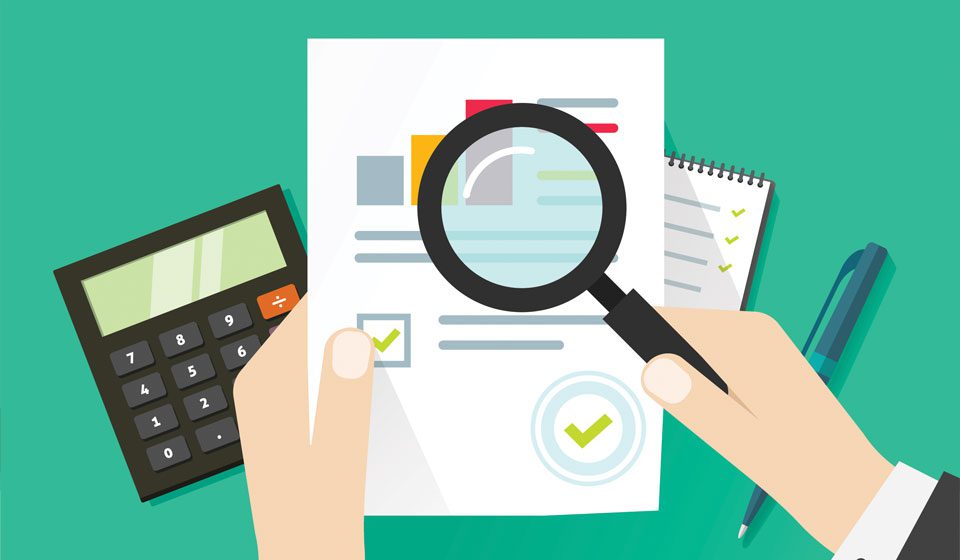So, you’ve setup a client meeting. Next comes a whirlwind of emotions. You’ve experienced the thrill from the initial sense of accomplishment (fistpump!), only to realize you haven’t done anything yet. You may also realize that this meeting is important, and what you do from here on out will make or break the relationship. It’s a scary prospect, but the good news is that it is entirely in your hands. This post will give you some essential tips on how to pull off a successful web design client meeting.
Developing a website can be a largely solitary endeavor, which makes it easy to forget the human connection. Every professional website designer learns at some point that websites have a lot more to do with people than code. For a client, whether you are the right fit comes down to two things: trust and effective communication.
To a lesser extent – awkward small talk, sweating, nervous laughter, and the possibility of rejection are all part of the recipe for success. Interpersonal skills may not come as naturally to those us of who are more introverted, but with a little preparation and practice, you can come off as competent and confident at all of your client meetings.
Create a Strategy
A strategy essentially answers two questions. Where are we going and how are we going to get there? After you’ve done some digging, you can begin to flesh out a basic strategy. This is a solid starting point to help you achieve your objectives. To do this you can analyze your client’s past behavior and look for patterns to understand their strategies.
It’s important to find actions you can take to solve problems. Say you are in charge of redesigning an online t-shirt store. Some questions you may want to answer for SEO might include:
- What T-shirts are users viewing the least?
- Why aren’t people viewing them?
- Can we find ways to increase page views for this product?
Tell the Story of Your Strategy

Image by 4zevar / shutterstock.com
Your ideas will be much easier to relate to if they resonate in the hearts and minds of the audience. If you don’t communicate your ideas in a clear, compelling way, how can you expect others to help you? Some of the most successful brands have rich backstories. Perhaps the most famous corporate backstory is that of Apple – founded in a garage by two college dropouts named Steve in the late 1970s. The language you choose can also help frame your ideas. The power of emotionally charged language is illustrated in famous motivational speeches, such as Martin Luther King Jr.’s I Have a Dream Speech, Just One for the Gipper, or the final Battle Scene in Braveheart.
Obviously, we don’t need to match the level of rhetoric used in those speeches – especially when we are assigned to do something less intense, like the redesign of a tax preparer’s website – but we can take some cues from those famous speeches. All of them have two things in common: they are incredibly inspiring, and they appeal to emotion. It can be very exciting for your client to see a roadmap to success, especially if they believe in the story wholeheartedly. It’s your job to get people excited about change and to embrace what’s ahead.
Keep the following tips in mind when you are communicating the story of any given strategy.
- Strategy is, essentially, the answer to simple questions like who are we? Where do we go? How will we get there?
- What compelling aspects of your strategy needs to be told?
- Sell the story of tomorrow. Strategy is the story of change. What will be different? Why will it be different? What is your role?
Let Your Client Know What’s in It for Them
Before you make any contact with potential clients, you should have a clearly defined value proposition. This boils down to “What’s in it for them?” Your client needs to know what can you do for them and exactly how you going to do it. This is one area where it’s more than acceptable to toot your own horn. You can let your work speak for itself, but it’s always helpful to do a little bragging.
- What do you do? Be clear about what your role is, including things you won’t, or can’t do. Try to avoid surprises!
- What is your objective? How are you going to achieve it?
- Use concrete examples of how you are going to make things happen. Are you going to strengthen their social network? Emphasize certain values? Set target goals?
- What’s in it for them financially? This is an instance where the vanity of metrics and charts will serve you well.
- Show examples of your experience. Qualify yourself with case studies, links, visual aids, live demos, or anything else that demonstrates competence.
How to Prepare for a Successful Client Meeting

Image by vladwel / shutterstock.com
Even if your meeting is informal, make no mistake about it – it is an interview. Being prepared will not only help you avoid hiccups during the meeting, it can give you a clear sense of direction. This will instill confidence in your would-be client, and show that you are aren’t afraid to make decisions.
Send an Email Reminder
Send an email reminder to your client with all the details of your meeting. You can automate this to make things easier as we mentioned in our post on the Ultimate Guide to Client Onboarding. I like to send three separate reminders before the meeting:
- Immediately after the appointment was made.
- A week before the meeting.
- The day before the meeting.
Setup a Phone Call Reminder
I like to call with a reminder 72 to 24 hours before the meeting. Automated phone calls can add a professional touch.
Do Your Research
In order to do the best job possible, you should have some insight into your client’s business. What are their goals? What past strategies have they used? Do some research on:
- The Industry. Find ways to learn about the field your client works in. For example, if you wanted to help someone set up a website for a non-profit organization, you might want to find some resources on non-profits, like this free course on the Essentials of Nonprofit Strategy. Another way to learn about a particular niche is to browse through industry trade journals.
- The Client. You should take some time to get to know the individual or group of individuals you will be speaking with. Getting a feel for someone’s personal style and how they do business can help you gain a deeper understanding of your role.
- Background Information. If it’s an established organization, take a look at their mission statement. This is a great way for you to learn about your potential client’s core values and the purpose of their business.
Prepare an Agenda
You are the in charge of facilitating this meeting, and it’s up to you to keep the ship afloat. You don’t need to plan things word for word, but it helps to have some sort time-table that includes topics you want to discuss.
- Prepare lots of questions. Try and get as much of the information you need as possible.
- Keep a list of relevant topics handy. I like to make a checklist of things that I need to go over.
- Get answers to important questions. Try to get any pertinent information relating to your strategy.
- Use storyboarding and wireframing. These methods can be great collaborative activities.
- Prototypes and swag make great gifts. It’s always a good idea to give people something they can hold or see.

Image by KittyVector / shutterstock.com
I recently had a meeting with a client about his website redesign. Before I made an agenda, I wrote down a quick list outlining the things I wanted to cover, along with estimated time-limits:
- Introductions and small talk – 10 minutes.
- Compare notes on industry insights – 7 minutes.
- Show some case studies of similar sites – 10 minutes.
- Showcase the content inventory table and get feedback – 10 minutes. After I build a sitemap, I like to start each website design by taking inventory of all the content I want to add for each page. Download this free content inventory spreadsheet from MaadMob(.xls).
- Show storyboard samples 1 and 2. Get feedback – 30 minutes.
- Talk about basic SEO services and other marketing services. Get feedback – 10 minutes.
- Ask a ton of questions throughout.
Setup a Mock Interview
Okay, we are not all great speakers, but practice can help bridge that gap. Try setting up a mock meeting with a timer. Use anyone at your disposal to practice in front of – including your dog, mother, or the mirror if no one else is around. There are lots of resources like Toastmasters International or Public Speaking Meetups that have meetings where you can practice public speaking so you’re more confident at the actual meeting.
Wrapping Up
One of the things I love most about web/info design, is that there are so many different skills you get to learn and practice. Just like everything else, practicing your people skills may seem daunting at first, but once you get the hang of it, it is very rewarding. Hopefully this post inspires you to design a successful client meeting. Remember, a little enthusiasm goes a long way and genuine interest leads to genuine insight.
Do you have any experiences that you’d like to share? Let us know in the comments section below.
Article thumbnail image by Dim Tik / shutterstock.com









This is a great precautionary article, with good suggestions for prep and actually conduct in the client meeting.
Early on in my website development and SEO work, (and even still), I forget how closely connected my client’s sense of self and persona are to their website. Restrictive reactions kick in early in the discussions about change and I am reminded how powerful the status quo can be in the face of changes, no matter how needed those change are.
Go slow and carry a good strategy. Great advice.
Thanks for one of the amazing post Brenda. You have explained everything very clearly in this post. Keep going. A little suggestion is that, it would be even more better for regular readers of your blog like me, if you could add the custom search bar to search through the desired article from your blog.
I also recommend to go with another person from the company, in case the client do a question that you cannot answer or you don’t know how to. Also, few months ago I saw how the other person gave a better idea for the project that mine. It’s better to have another opinion in the table.
I recommend having the client fill out a questionnaire ahead of time outlining what they think is and isn’t working on their current site, company history, their main competitors, who their target market is, what their favorite website is, and if they want any special functionality on the site. You can then make these discussion points during the call to get more clarification if needed. Starting out taking about company history is always a good thing, because clients love talking about their business and how they started it (assuming you’re talking to the owner).
Very good point, Tim! I was going to recommend the same thing. I have found, however, that breaking up my questionnaire into bite-size chunks can be invaluable for those super busy clients (which they all seem to be). In essence, I end up doing a couple of phone consults, discussing each section through completion. I find that having this foundational information makes the design process so much smoother! Plus, the back and forth between you and the client creates a strong working relationship!
Thank you for this organized process of the most difficult aspect of designing a website. I have found getting the content needed from busy and distracted clients the biggest challenge. From your process and my last couple of client interactions, I think quoting content creation at the beginning of the process will give them a better understanding of of what is needed from them.
Your article has given me a wonderful road map to accomplish this.
Thanks again!
Brenda, thank you for your insights on preparing for and conducting a strong client meeting. I’d like to add to your invaluable direction, especially in site redesign and redevelopment cases.
After the opening small talk, I would highly recommend listening and notating a potential client’s concerns about what’s not working with their existing website. It is also important for me to gain a little understanding about why their current or former designer and/or developer didn’t work out. By doing so, I have a better understanding of why things aren’t working and how I can help them improve their online presence and establish a long term working relationship.
Closure is always important in winning my clients because they do not want to make the same mistake twice, in hiring a designer and/or developer that’s going to lead them to a loose or dead end.
Those are really excellent points. Thanks so much for sharing!